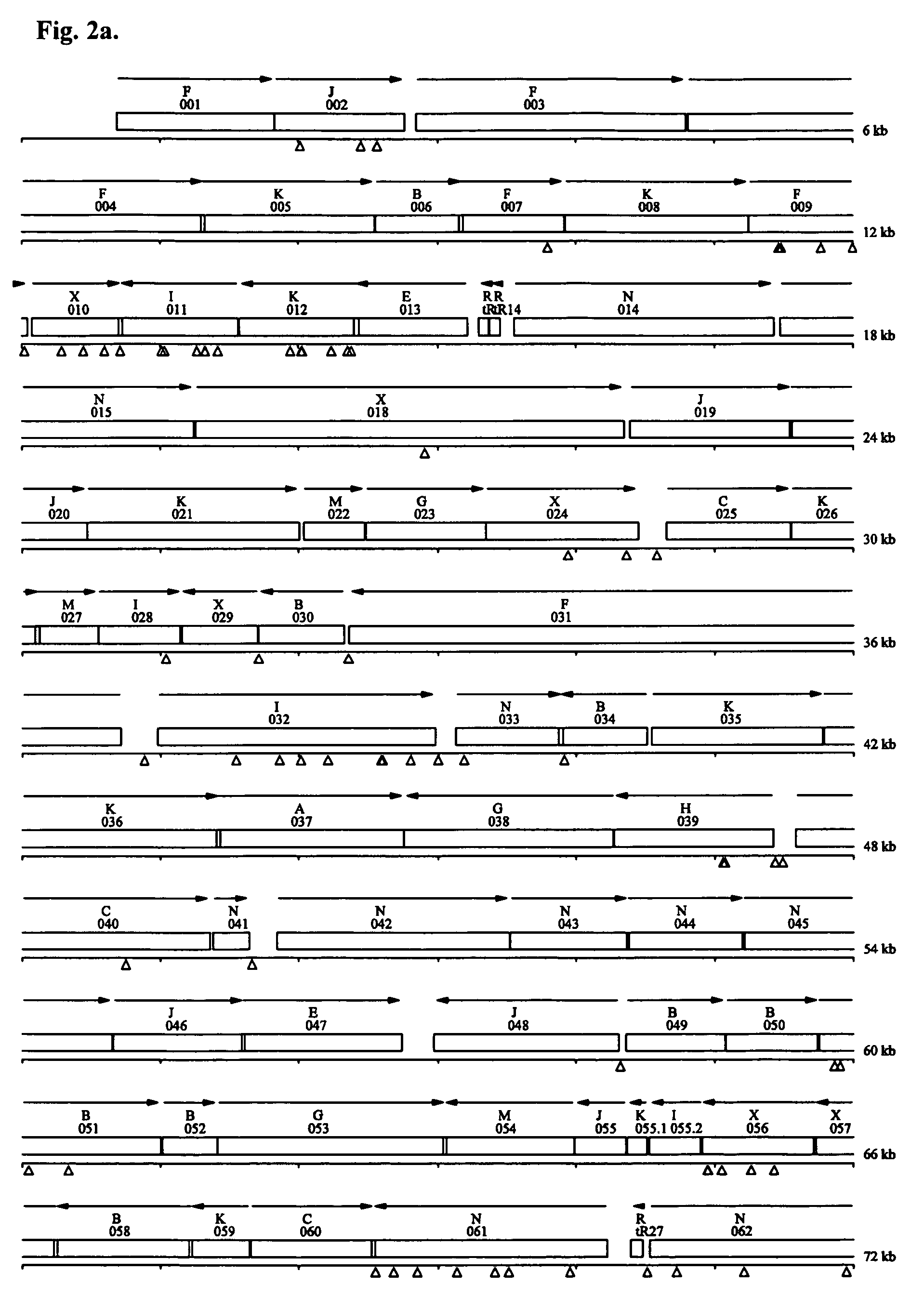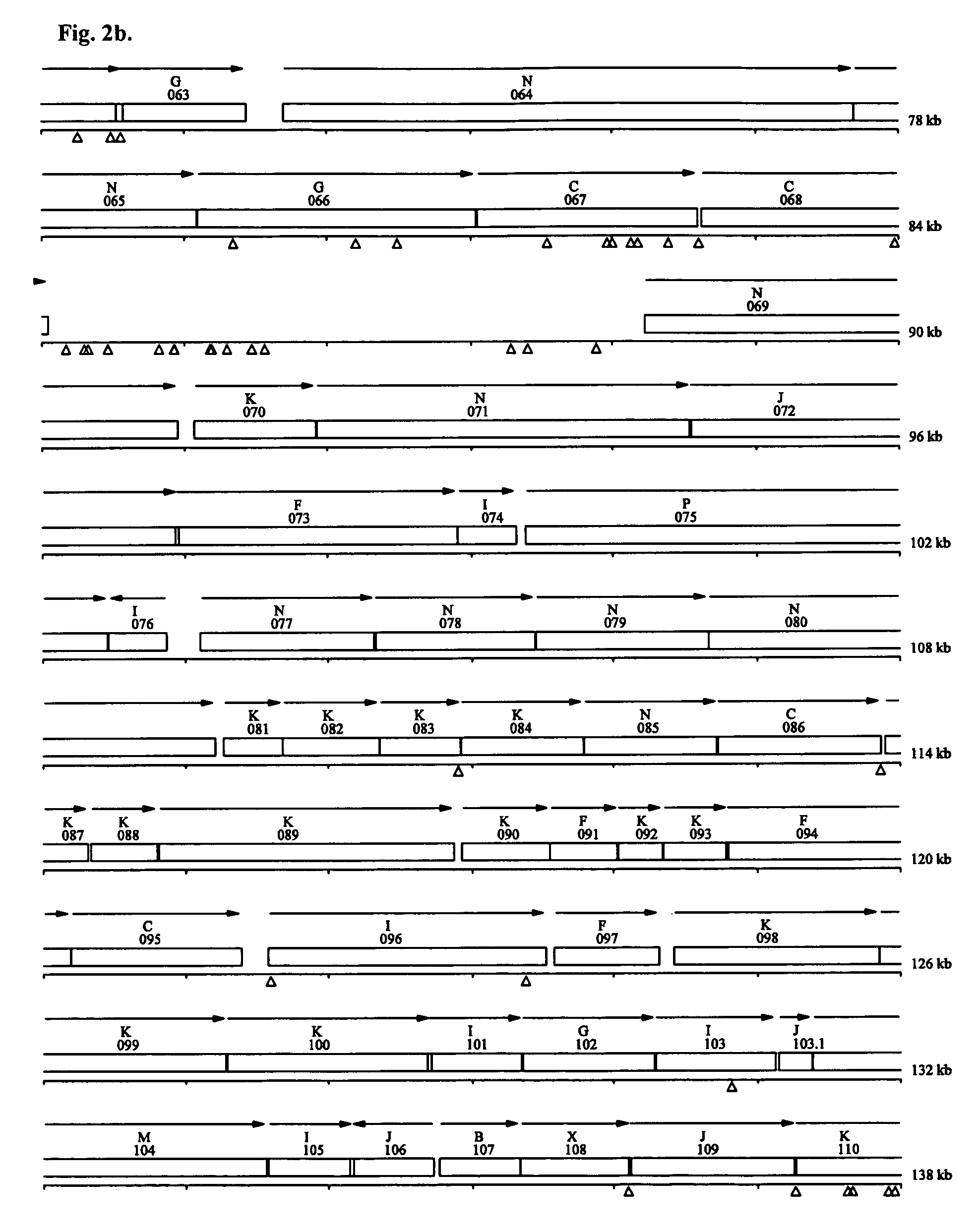Minimal bacterial genome
a technology of bacterial genome and genome, applied in the field of minimal bacterial genome, can solve the problem of not determining whether their products perform essential biological functions
- Summary
- Abstract
- Description
- Claims
- Application Information
AI Technical Summary
Problems solved by technology
Method used
Image
Examples
examples
I-Materials and Methods
[0073] A. Cells and plasmids. We obtained wild type M genitalium G37 (ATCC® Number: 33530™) from the American Type Culture Collection (Manassas, Va.). As part of this project we re-sequenced and re-annotated the genome of this bacterium. The new M genitalium G37 sequence (Genbank accession number CP000122) differed from the previous M genitalium (13) genome sequence at 34 sites. Several genes previously listed as having frameshifts were merged including MG 016, MG 017, and MG018 (DEAD helicase) and MG419 and MG420 (DNA polymerase III gamma / tau subunit). Our transposon mutagenesis vector was the plasmid pIVT-1, which contains the Tn4001 transposon with a tetracycline resistance gene (tetM)(15), and was a gift from Dr. Kevin Dybvig at the University of Alabama at Birmingham.
[0074] B. Transformation of M genitalium with Tn4001 by electroporation. Confluent flasks of M genitalium cells were harvested by scraping into electroporation buffer (EB) comprised of 8 m...
PUM
| Property | Measurement | Unit |
|---|---|---|
| pH | aaaaa | aaaaa |
| pH | aaaaa | aaaaa |
| volume | aaaaa | aaaaa |
Abstract
Description
Claims
Application Information
 Login to View More
Login to View More - R&D
- Intellectual Property
- Life Sciences
- Materials
- Tech Scout
- Unparalleled Data Quality
- Higher Quality Content
- 60% Fewer Hallucinations
Browse by: Latest US Patents, China's latest patents, Technical Efficacy Thesaurus, Application Domain, Technology Topic, Popular Technical Reports.
© 2025 PatSnap. All rights reserved.Legal|Privacy policy|Modern Slavery Act Transparency Statement|Sitemap|About US| Contact US: help@patsnap.com



